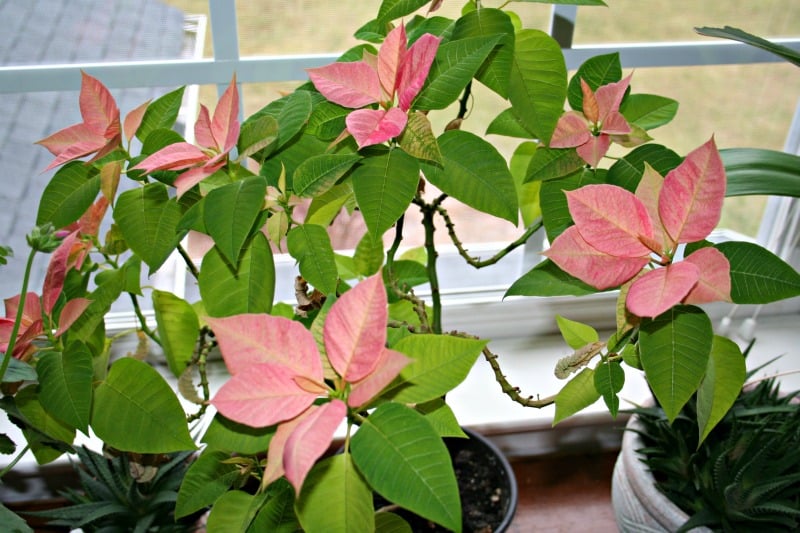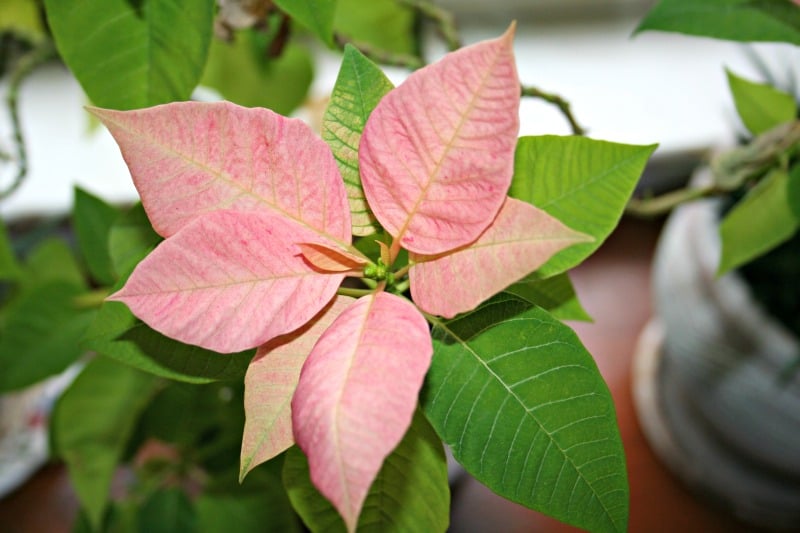Growing Poinsettia
Keep Poinsettia Away from Drafts
Poinsettia Light Requirements

My office poinsettia.
Water Needs for Poinsettia
Getting a Poinsettia to Flower Again
Tip: when purchasing poinsettia, look for a plant with as little yellow showing in the center as possible. This means that the flowers are still closed. You will have more time to enjoy your plant before the cyathia shed their pollen and the brachts and leaves fall.






[…] Christmas, my friend gave me a lovely poinsettia plant as a gift. I usually don’t keep live poinsettia in the house; they are toxic to dogs and […]